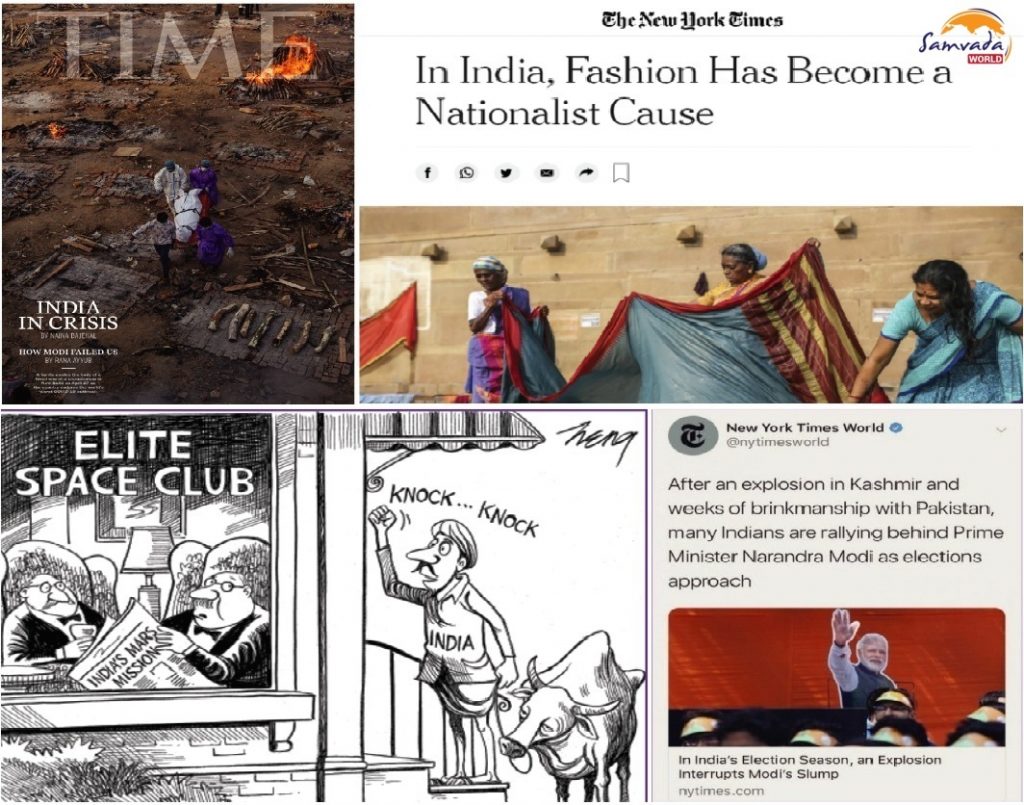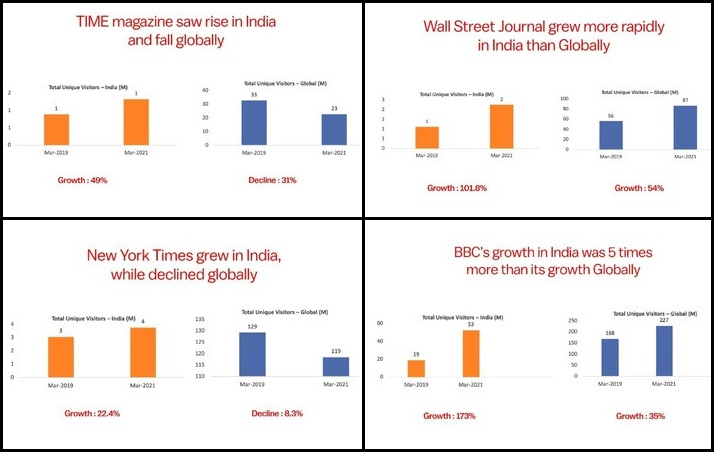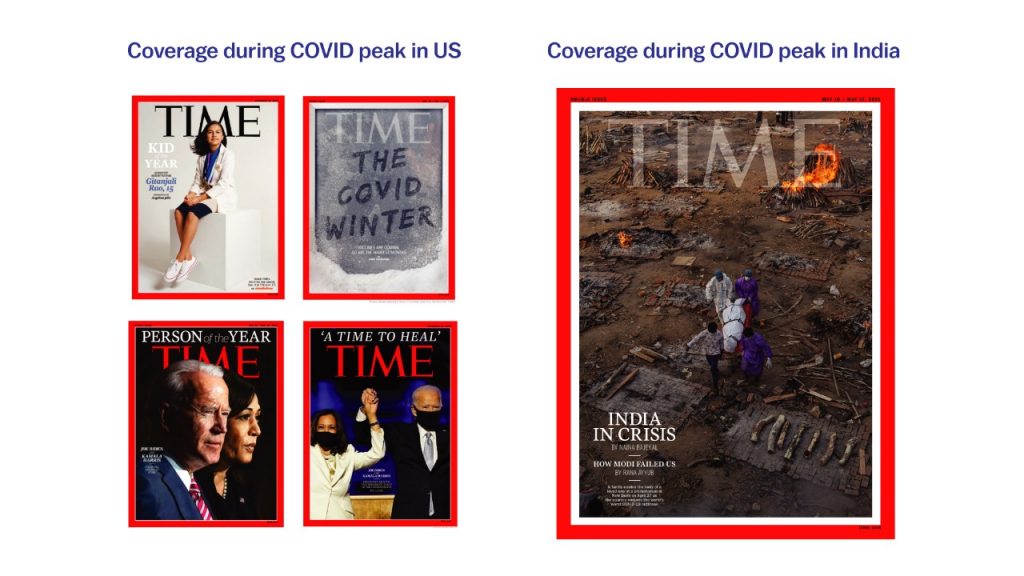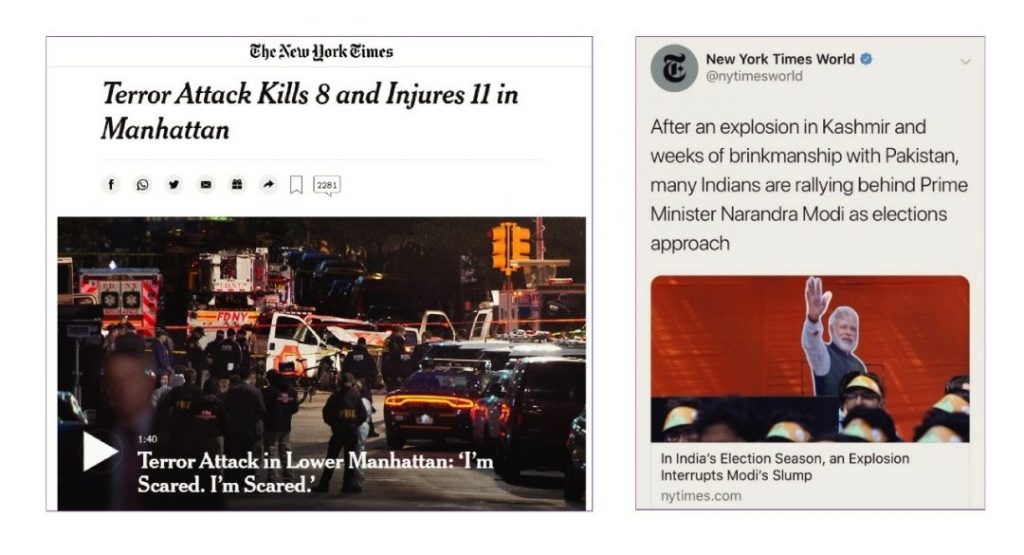
A report titled ‘Analysis of Global Media Coverage of Events in India’ and published by IIMC in the latest issue of its quarterly media journal has found that western Media reportage on India over the last reflects prejudice, lack of nuances, poor understanding of complexities, hit & run reporting, click bait journalism and limited fact-checks. The report exposes how Western Media has different yardsticks for coverage of similar socio-political developments in India and in the West.
The report, written by Journalist & Media Analyst Amol Parth, explains the irrational global media coverage of socio-political developments in India through facts and figures. The report, through in-depth analysis of 3000+ India related Articles by global media, case studies & readership growth pattern, shows the inherent bias about India in the Western Media and its coverage. The report quotes scientific papers, communication experts and journalists associated with these concerned Western media houses to explain how there is a natural tendency to prefer click bait journalism in order to garner more eyeballs which in turn helps grow their business.
The report shows that the Western Media have indulged in such journalistic practices due to declining demand for print compounded with stiff competition and limited space to grow in their own countries and that these Western media houses have found India as a lucrative market with the third largest English speaking population. India’s vast and varied demography makes it a complex society with many potential fault lines which can be exploited, the report shows.
The claims in the report are backed by the data of Western media’s readership growth in India (procured from American media measurement agency Comscore). Analysis of the data indicates that the correlation between their digital readership growth in India and their sensational reportage is strong. Their readership in India has grown more rapidly in comparison to their growth globally.
Readership data in the report indicates strong correlation between the Western Media’s digital readership growth in India & their sensational reportage:

Among key findings of the report, what stands out is that the case studies in the report indicate a pattern of hit & run stories to catch eyeballs which means that most of their stories have exaggerated headlines with minimal substance in the story to support the doomsday prophecies in their headlines. Case studies in the report also expose the editorial prejudices of these media houses against India.
The report further investigated Western media’s local network in India and found that just one or two correspondents for covering a vast and diverse country like India also contributes to the prejudice, lack of nuances, poor understanding of complexities and limited fact-checks in their reportage.
The report elaborates upon the inability of foreign correspondents based in India to understand the complexities of Indian society, vibrancy of Indian democracy and nuances of governance structure. Comparative analysis in the report suggests that the values, the global media houses hold dear while reporting in their own countries, is lacking in their reportage on similar events in India.
The report expresses concern that such coverage by Western Media driven more by their business interest and less by the pursuit of journalism hurts India’s image globally, putting India’s bilateral ties, multilateral relations and long-term economic interests at risk.
Examples of such prejudiced reporting quoted in the report are below:
Difference in coverage of COVID peaks in India and at home

New York Times cartoon which ridiculed India’s budget mission to Mars.

New York Times report paints India’s decision to promote its indigenous textile industry as an obstacle in the country’s growth!

Pulwama terror attack called an explosion by New York Times

